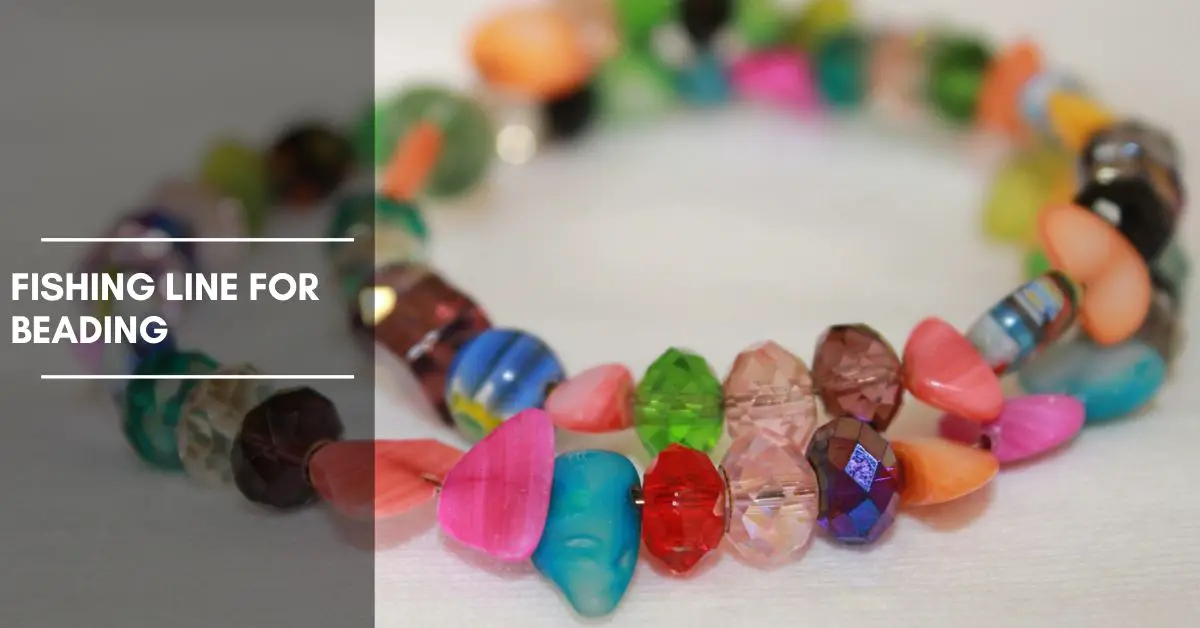As an avid angler and a passionate beader, I’m always looking for innovative ways to combine my hobbies. One day, I had a thought: Can we use a fishing line for beading…? After some research and experimentation, I discovered that it is indeed possible and offers a range of benefits.
In this article, I’ll discuss how fishing lines can be used for beading, and its advantages, and answer some common questions related to the topic.
The Basics of Fishing Line
Types of Fishing Line
Fishing line comes in three main types: monofilament, fluorocarbon, and braided. Each type has its pros and cons, but for beading purposes, monofilament and fluorocarbon are the most suitable options. They’re clear, making them inconspicuous when used in jewelry making.
Fishing Line Strengths and Sizes
Fishing lines are available in various strengths and diameters, measured in pounds (lb) and millimeters (mm) respectively. For beading, choose a line with a smaller diameter and lower strength to ensure flexibility and a discreet appearance.
Beading with Fishing Line
Why Choose Fishing Line for Beading?
Fishing line is an excellent alternative to traditional beading wire for several reasons:
- Affordability: A fishing line is often cheaper than beading wire, making it an attractive option for budget-conscious crafters.
- Strength: Despite its thin diameter, the fishing line is strong and can hold up well against wear and tear.
- Flexibility: The fishing line is flexible, which makes it easy to work with and ideal for creating intricate designs.
- Invisibility: Clear fishing line blends seamlessly with most beads, giving your creations a professional and clean look.
Tips for Beading with Fishing Line
- Use the right tools: Make sure you have a pair of sharp scissors or a dedicated fishing line cutter to trim the line.
- Pre-stretch the line: Gently stretch the line before using it to prevent sagging over time.
- Secure knots: Tie secure knots, such as the surgeon’s knot or the double overhand knot, and apply a dab of clear nail polish or glue to keep them in place.
- Use crimp beads: For added security, use crimp beads to hold the fishing line in place.
Alternatives to Beading Wire
Elastic Cord
Elastic cord is another popular alternative to beading wire, especially for stretchy bracelets and necklaces. It’s easy to use, requires no clasps, and accommodates various wrist and neck sizes.
Nylon Thread
Nylon thread is another suitable option for beading. It’s strong, flexible, and available in a range of colors. However, it may not be as durable as a fishing line or beading wire.
Selecting the Best Fishing Line for Beading
Monofilament vs. Fluorocarbon
Both monofilament and fluorocarbon lines work well for beading, but they have some differences:
- Visibility: Fluorocarbon is less visible than monofilament, making it a more discreet option.
- Stretch: Monofilament stretches more than fluorocarbon, which can be a pro or con, depending on your project’s needs.
- Abrasion Resistance: Fluorocarbon is more resistant to abrasion, making it a more durable choice.
Ultimately, the choice between monofilament and fluorocarbon lines comes down to personal preference and the specific requirements of your beading project.
Choosing the Right Diameter and Strength
When selecting a fishing line for beading, opt for a lower strength (2-10 lb) and a smaller diameter (0.10-0.25 mm). This will ensure the line is flexible, easy to work with, and visually unobtrusive.
Conclusion
A fishing line is a versatile and cost-effective alternative to traditional beading wire. With its strength, flexibility, and near-invisibility, it’s an excellent choice for many jewelry-making projects. By selecting the appropriate type, diameter, and strength of the fishing line, you can create stunning and durable beaded pieces that will impress friends and family.
Frequently Asked Questions
Q1: Can I bead with a fishing line?
A1: Yes, you can bead with a fishing line. Both monofilament and fluorocarbon fishing lines are suitable for beading, as they are strong, flexible, and clear.
Q2: Can you use a fishing line for jewelry making?
A2: Absolutely, a Fishing line is an excellent choice for jewelry making due to its strength, flexibility, and unobtrusive appearance. It works well for necklaces, bracelets, and other beaded creations.
Q3: What can I use instead of beading wire?
A3: Apart from the fishing line, other alternatives to beading wire include elastic cord and nylon thread. Each option has its own set of advantages and drawbacks, depending on the specific requirements of your project.
Q4: What is the best line for stringing beads?
A4: The best line for stringing beads depends on your project and personal preference. Fishing lines (monofilament or fluorocarbon), beading wire, elastic cord, and nylon thread are all suitable options. Consider factors such as strength, flexibility, and appearance when making your choice.
Q5: How do I choose the right fishing line for beading?
A5: To choose the right fishing line for beading, consider the following factors:
- Type of line: Monofilament and fluorocarbon lines are the best choices for beading.
- Diameter: Opt for a smaller diameter (0.10-0.25 mm) for flexibility and a discreet appearance.
- Strength: Select a lower-strength (2-10 lb) fishing line for beading projects.

